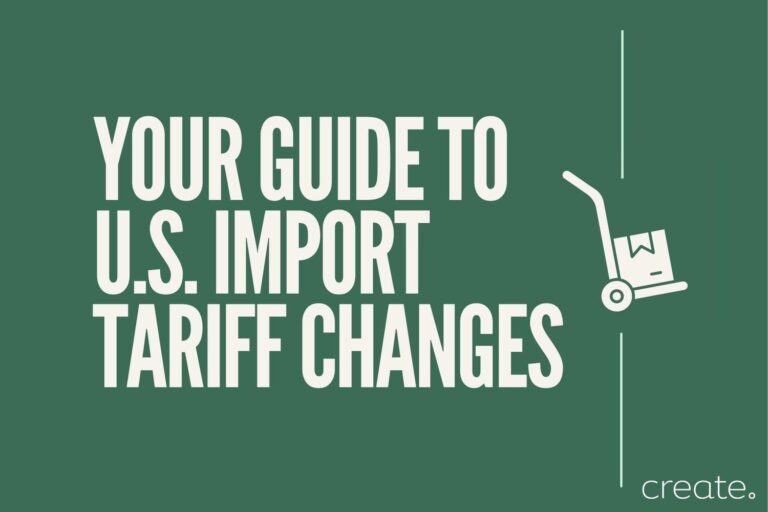The long-standing tariff exemption known as the “de minimis” rule, which has shielded US shoppers from customs duties on low-value imports, is coming to an end. This change marks a significant shift in trade policy that is poised to affect millions of consumers across the United States. As the exemption expires, tariffs will be applied to a wider range of online purchases, potentially leading to higher prices and altered shopping habits. Our analysis explores the implications of this policy shift, its impact on US consumers, and the broader consequences for cross-border e-commerce.
De minimis exemption cancellation set to impact US consumer prices
Shoppers across the United States are bracing for a noticeable increase in prices as the long-standing de minimis exemption—which previously allowed goods valued up to $800 to enter duty-free—comes to an end. This policy shift means many small and low-cost international purchases, particularly from popular e-commerce platforms, will now be subject to tariffs and import taxes. Retailers warn that this change could have a cascading effect, pushing up costs on everything from electronics and fashion to specialty food products.
The end of the exemption is expected to impact consumers in various ways, including:
- Higher final purchase prices due to the addition of sales taxes and customs duties
- Increased shipping fees as some vendors pass along customs clearance costs
- Potential delays in delivery times caused by more stringent customs inspections
| Product Category | Expected Price Increase | Tariff Rate |
|---|---|---|
| Electronics | 5-12% | 2.5-7.5% |
| Clothing & Accessories | 7-15% | 10-15% |
| Specialty Foods | 6-10% | 5-10% |
Retailers brace for increased costs and supply chain challenges
As the US government phases out the de minimis tariff exemption, retailers are preparing for a surge in expenses that could strain already fragile supply chains. The removal of this exemption, a duty-free threshold that previously allowed low-value imports to enter the country without additional tariffs, is expected to increase costs on a wide array of consumer goods. Businesses warn that these higher import tariffs will be quickly passed down to customers, potentially fueling inflation and dampening consumer spending during a volatile economic period.
Industry players emphasize several critical challenges ahead:
- Rising logistics costs: Anticipated tariff hikes will exacerbate the pressures on shipping and warehousing budgets.
- Inventory management complexities: Retailers must navigate fluctuating costs while avoiding overstock or shortages.
- Supplier renegotiations: Companies may seek new deals or shift sourcing to countries with more favorable trade terms.
| Cost Driver | Impact |
|---|---|
| Tariffs on low-value imports | Up to 15% increase in product costs |
| Logistics & handling fees | 5-8% additional expense |
| Supplier switch costs | Variable, up to 12% of procurement budget |
Experts advise shoppers to anticipate higher expenses on imported goods
With the removal of the tariff exemption threshold, industry analysts warn that consumers should prepare for a noticeable uptick in prices of imported products. Items that once fell below the de minimis value—previously exempt from customs duties—will now face added import taxes, directly impacting retail costs. This shift is expected to affect a broad spectrum of goods, from electronics and fashion to small household items, as these previously cost-effective imports become more expensive to bring into the US market.
Key factors driving increased costs include:
- Elimination of tariff relief for shipments valued under $800
- Higher customs processing fees for international parcels
- Potential delays as customs agencies adjust to new enforcement protocols
| Category | Typical Price Increase | Examples |
|---|---|---|
| Electronics | 5-10% | Smartphones, headphones |
| Apparel | 7-12% | Clothing, accessories |
| Home Goods | 4-9% | Decor, kitchenware |
Policy implications call for strategic adjustments in US trade regulations
With the expiration of the de minimis tariff exemption, policymakers face mounting pressure to recalibrate US trade regulations in a way that balances consumer protection with economic competitiveness. The removal of the exemption, which previously allowed low-value imports to bypass tariffs, is expected to complicate supply chains and increase costs for small retailers and consumers alike. This shift demands strategic adjustments to avoid unintended consequences, such as supply bottlenecks or increased prices for everyday goods.
Key policy considerations include:
- Reevaluating threshold values to ensure small businesses can still benefit without undermining tariff revenue.
- Enhancing customs efficiency to manage the expected surge in low-value shipments subject to tariffs.
- Implementing targeted relief measures for industries disproportionately affected, such as e-commerce and small-scale importers.
| Policy Area | Potential Adjustment | Expected Impact |
|---|---|---|
| Tariff Thresholds | Increase de minimis limit | Reduce administrative burden |
| Customs Procedures | Digital documentation expansion | Faster clearance times |
| Industry Support | Targeted subsidies | Mitigate price shocks |
The Way Forward
As the de minimis tariff exemption ends, US shoppers are poised to face higher prices on a wide range of imported goods, altering the landscape of cross-border e-commerce and international trade. Consumers and retailers alike will need to navigate the new costs and complexities brought by this shift, signaling broader implications for global supply chains and the retail market. The full impact of these changes will unfold in the coming months, as policymakers and businesses adjust to a post-de minimis trade environment.




